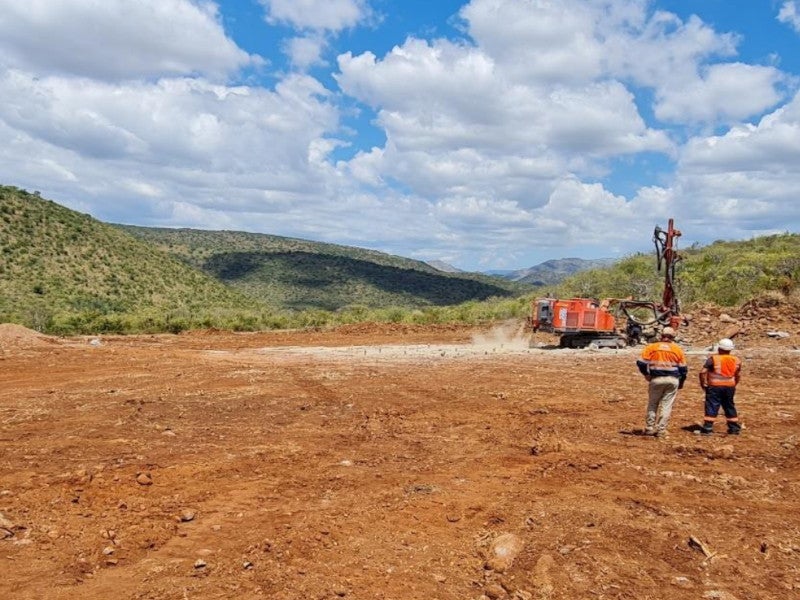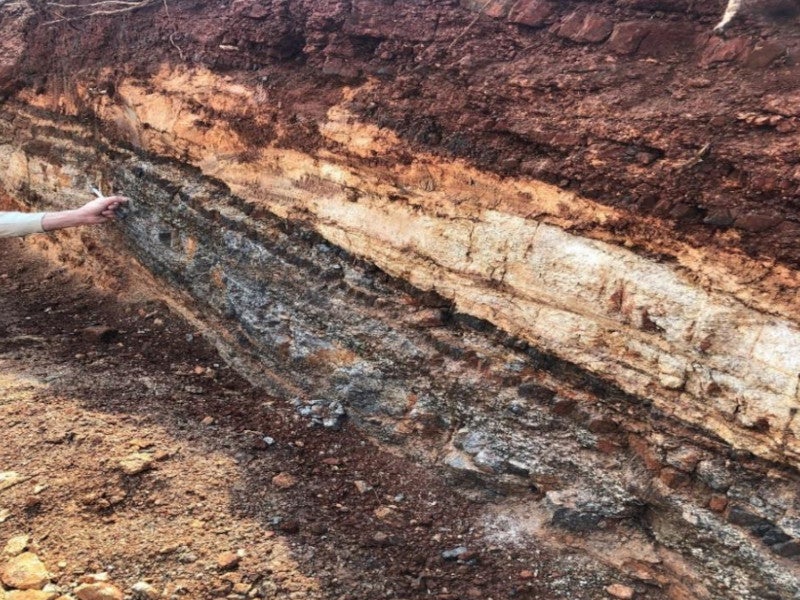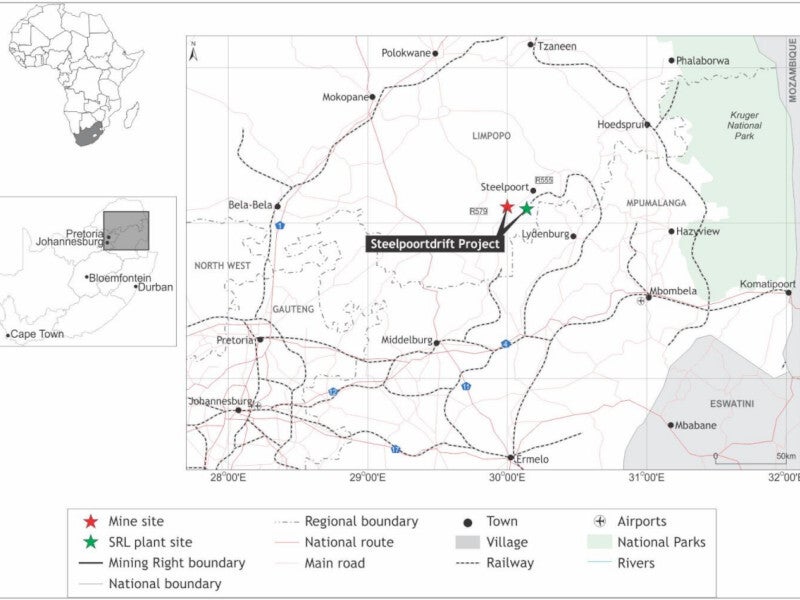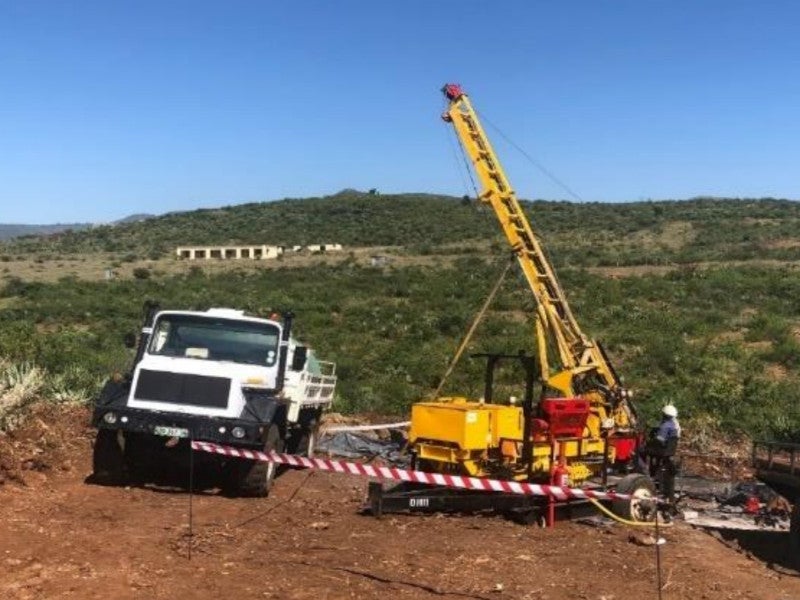The Steelpoortdrift vanadium project is an open-pit mine located in the Bushveld igneous complex of South Africa. It is one of the world’s largest undeveloped vanadium deposits.
Vanadium Resources, a mining company based in Australia, is developing the project. The pre-feasibility study for the project was completed in 2021, while the definitive feasibility study was completed in October 2022.
The project is estimated to require a total investment of $211m and has a mine life of 25 years. Construction on the project commenced in the first half (H1) of 2023.
Vanadium concentrate production is scheduled to commence in H2 2023 and vanadium flake production in H1 2024.
Steelpoortdrift vanadium project location
The Steelpoortdrift vanadium project is located in the Limpopo province of South Africa, 247km north-east of the country’s capital of Pretoria.
Geology and mineralisation
The Steelpoortdrift vanadium project is located within the eastern limb of the Bushveld complex, which is the world’s largest igneous intrusion zone, spanning 66,000km2 in area. It lies near the contact between the upper zone and main zone of the complex.
Vanadium mineralisation occurs within four titano-magnetite-rich layers in the complex’s upper zone and comprises a layered succession of ferrogabbros, troctolities, anoethosites, and magnetite layers.
Reserves
The Steelpoortdrift vanadium project is estimated to contain proven and probable reserves of 76.86 megatons (Mt) grading 0.72% vanadium pentoxide (V2O5) and containing 0.55Mt of V2O5.
Mining methods
The Steelpoortdrift vanadium project will be developed using conventional open-pit mining methods at a 5m bench height. Three open pits will be developed within the low-impact inclusion zone located between the Shakwaneng and Magagamahubedu rivers.
Mining will first commence at the second pit, which is estimated to contain 26.23Mt of titaniferous vanadium ore, followed by the first pit, which is estimated to contain 54.45Mt of ore. The third pit, containing 2.83Mt of ore, will be mined last.
Mining will be performed using drill rigs, excavators, and haul trucks. An auxiliary mining fleet of dozers, graders, water trucks, and utility vehicles will also be used.
Ore processing
The recovered ore will undergo primary treatment at an on-site concentrator and further treatment at a Salt Roast Leach (SRL) plant planned to be developed within an industrial factory area located approximately 25km away from the concentrator.
The concentrator plant will process 208 tonnes per hour of run-of-mine ore and will produce a concentrate containing between 2.08% and 2.16% of V2O5.
The ore will then pass through a two-stage crushing circuit in the concentrator plant followed by ball milling and hydrocyclone classification and three stages of wet magnetic separation to produce a refined concentrate. The concentrator plant will also feature a dewatering facility, re-grind magnetic separation, water circuit, regrind handling, and tailing handling areas.
The SRL plant will treat the refined concentrate produced by the concentrator plant to produce more than 98% of V2O5 flake. It will comprise a roasting kiln and cooler, water leach and filtration circuit, desilication circuit, ammonium metavanadate precipitation circuit, flash drying, furnace and cooler circuit, and Na2SO4 crystalliser.
The produced vanadium flake will be packed into bulk bags or steel drums and transported by trucks for shipment through ports.
Site infrastructure
The mine can be accessed through the tarred R555 regional route between Roossenekal and Steelpoort. The mine site is accessible by a single-lane steel bridge across the Steelpoort River.
Power for the concentrator plant will be provided by a 5MW photovoltaic (PV) solar farm located in the southern part of the mine site. Back-up power will be provided by ESKOM, South Africa’s national power provider.
Power for the SRL plant will also be provided by ESKOM. The developers are also planning to develop a utility-scale PV plant near the plant to generate green energy.
Process water for the concentrator plant will be sourced from the De Hoop dam water distribution system. Raw water for the SRL site will be obtained through the Kadoma connection of the Olifants river water management facility.
The main training facility, laboratories, stores, administration facilities, and offices will be constructed at the project site.
Contractors involved
Sound Mining International, a consulting company, was responsible for the geological modelling, mineral resource estimation, pit optimisation, and mine design.
GeoActiv, a mining and geological consultant, conducted the geotechnical drilling while SPH Kundalila, a material handling specialist, was responsible for trial mining and mine costing.
United Mining Service, a mining and minerals processing services provider, was responsible for the concentrator processing plant design while the SRL plant was designed by Consulmet Metals, a mineral processing solutions provider.
Nurizon Consulting conducted surface geotechnical studies and provided the tailings storage facility design.
Minopex Technical Advisory, a plant operations and maintenance specialist, was responsible for ensuring the operational readiness of the project.
Red Kite Consulting conducted the environmental baseline studies and hydrogeology while DRA Projects, an engineering, project delivery, and operations manager, was responsible for PV plant design.
Tenement Mining, a technical adviser, was responsible for the DFS while Deloitte, a consulting company, conducted the market assessment.







